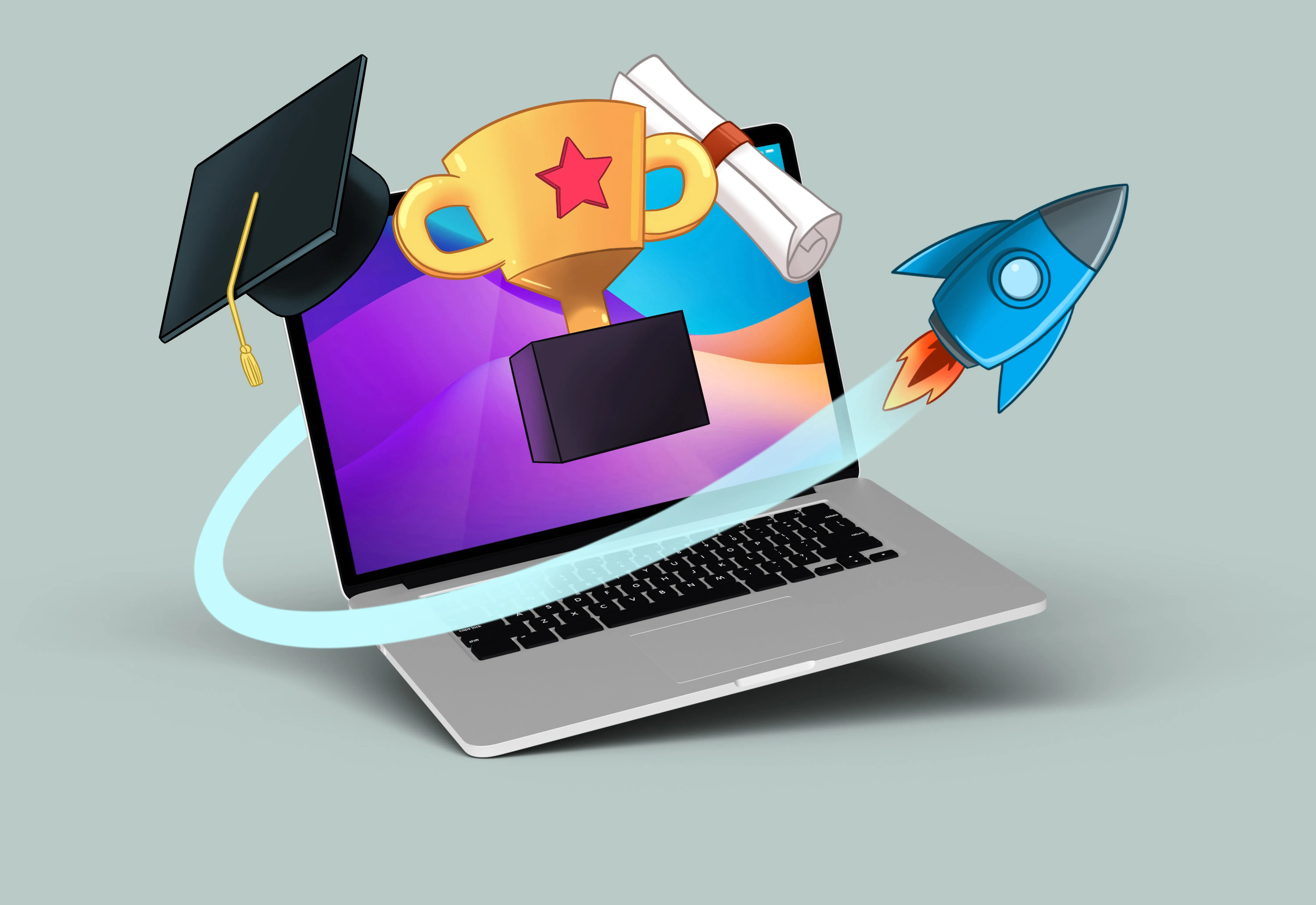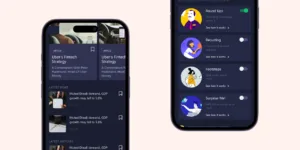Boosting Student Engagement Using Gamification In Edtech UX Design

Something as boring as filling in the blanks or finding the synonyms and antonyms of the words can be made into the most exciting exercise using gamification elements in UX design.
Gamification made its appearance first in 1908 when the boy scout movement was established. The boy scouts were awarded badges as a sign of achievement. It slowly developed into a concept that makes mundane tasks fun through addition of activities. This technique was then adopted for market research, teaching disabled students and as the millennium ended, it was widely used as an incentive to buy more consumer goods and fly more – Coupons and Frequent flier miles.
It was only in 2008, the term “Gamification” was coined and ever since it has become the ingenious way for companies to make their user’s experience with their product rewarding.
The UX design trends in the recent years have featured gamification as the most exciting element to have. Especially with the Edtech sector booming, gamification is making more and more home at interactive learning apps.
Understanding Gamification in UX
Gamification in UX design is a technique of using game mechanics into non-game tasks. It is done to make the experience of the task easy, simple and interesting for the user. By making a certain mundane action interesting, the product or the app is engaging users and motivating them to use it more.
Gamification can be widely seen in financial apps, digital banking systems, healthcare and e-learning applications too. Gamification has become an essential component of great mobile mobile app design and other digital products. But how does Gamification make edtech and learning apps more fun ?
Gamification Elements as Part of UX Design in Edtech Platforms
Edtech platforms benefit a huge deal from the use of gamification. It can be applied in multiple ways. Many options like personalized learning paths, real-time progress maps leading to a targeted study schedule, and dynamic suggestions contribute to a better learning experience. These elements make learning effective and bear results:
Personalized Learning & Training:
Gamification strategies for personalized learning significantly increases the learner engagement by crafting custom and relevant experiences. These tailored elements motivate the students and nudge them to deeply invest themselves in the learning process.
With the use of individualized learning paths, learners control their own education, align it with their interests and needs. Doing so helps them grow a sense of ownership and actively engage.
Personalized performance indicators track progress, providing valuable insights and feedback, helping learners monitor achievements, set informed goals and focus on areas where they lack most. Real-time feedback, delivered through gamification elements like badges and progress bars, enables learners to assess and adjust their performance immediately, keeping them motivated.
Additionally, personalized call-to-actions encourage continuous learning beyond formal sessions, offering ongoing motivation and rewards that lead to higher engagement and a stronger connection to the learning material.
Better Collaboration:
Student-to-student and Student-to-teacher collaboration is promoted through gamified processes. It encourages team building and enables students to compete in challenges together and assisting each other creating a supportive learning environment.
By tackling challenges collaboratively, the students are developing the essential skills such as critical thinking, communication and creative collaboration.
Creating intrinsic motivation through gamified elements:
Self-determination theory explains that being self-determined impacts motivation leading to immediate outcomes. Meaning, people feel more motivated to do an action when they think that their action will have a superior effect on the outcome.
Adding gamification elements to learning is backed by this theory. As it talks about the level of motivation and engagement within an individual, pushes them to grow, learn and become proficient.
Intrinsic motivation in students are created through themselves and gamified elements contribute to them. Features like rewards, coupons, badges and progress charts help them channel the motivation.
Gamified features have the potential to shape the mind of the learner, and this happens through small elements that cumulatively effect the change. To grasp this concept, we need to identify the small elements in UX design that create gamification.
Real-world Gamification Elements in Edtech Apps
What makes gamification so meaningful and exciting ? It is the use of these features in intuitive and innovative ways. These features by themselves sound normal, but when crafted together to create an experience, it makes all the difference. Let’s see how gamification unravels through various features:
Entry/Exit Criteria
Entry and Exit Criteria is the feature that makes the course unfold in such a way as to push the students to complete a lesson first before moving on to the next. This feature is used when the modules or lessons need to be accessed one after the other and only when the student achieves the cut-off percentage.
This feature makes the students go back and try harder to unlock the next level. Using Entry and Exit Criteria, the start and end points of a lesson can be gamified.
Notification and Reminders
Reminders and notifications with striking visuals are displayed to students so that they get a visual confirmation. These notifications can be used at the end of the task, after a goal is achieved or a new level or lesson is unlocked.
This element mainly creates reassurance and adds to the seamlessness of a gamified UI.
Badges
Badges act as certifications in a gamified learning system. These elements can be used to reward the user and appreciate their progress. Badges act as positive reinforcement to the users and the value of badges can be displayed through different shapes, sizes, and elements on them.
Having badges as a part of a gamified learning system makes the user feel like they are earning something and strive harder to collect more of them. These badges can be added to the user’s profile, leaderboard, feedback window or to show their progress in a team.
Leaderboard
All users are marked on the leaderboard depending on their performance. The learners are grouped into teams based on similarities and their progress is mapped on a board. This mapping is done based on their peers’ performance, personal progress and adherence to the deadlines.
Sometimes even the tutor has the option to mark the students on the leaderboards based on custom characteristics. This creates a sense of competition that e-learning lacks, when compared to physical classrooms.
Seeing their name up on the leaderboard is a major source of encouragement to the users.
Challenges
Time constraints and challenges add a huge effect to the gamified learning system. Users are asked to complete tasks within a certain time or challenged to do something differently. These constraints and challenges when met or completed are rewarded.
Failure to finish these tasks can also lead edtech providers to understand the gaps and weaknesses that exist. These features can be used to collect data about the student for better understanding.
Puzzles and Quizzes
Learning is made engaging with elements such as puzzles and quizzes. Puzzles make the process of answering questions interesting, nudge users to think critically and assess the problem skillfully.
Having these elements gives a hurdle to the users, but in a way that helps them challenge it, develop problem-solving skills from it and gain confidence on the subject and themselves.
Progressive Bars
The most critical part of an edtech platform is the ability to track progress of the learning program.
Progress bars do mainly three things:
1. They educate users about the progress
2. They update a students’ progress to the tutor
3. Shows how much value the user’s have gained from it.
Progress bars come handy in all these situations. The idea behind these progressive bars can also be to help users learn at their own pace. Plan how to aim for the next level and share their progress.
Journey
This feature is used popularly while onboarding a user onto the edtech platform. Journey is the entire experience from start to finish. Through gamified methods, the journeys are designed so that they complement the other features, tying everything together.
The journey includes various aspects to introduce the user to a new feature or a new level. Sometimes the UX design process recommends techniques like scaffolding to make the transition easier for the user.
The main goal of journey design is to improve the user’s interaction with the platform, making it more enjoyable and seamless. So, while designing an Edtech platform with gamified learning systems, a lot of thought goes into it. Plethora of considerations are kept in mind to make gamification work.
What Goes into Building A Gamified Learning App for Clients at NetBramha?
We understand that gamification and interactive learning elements enable higher engagement and retention of users. But, At NetBramha we also believe that these elements can create a rich, immersive, and highly engaging learning experience for users from all age groups.
iQuanta, a competitive exam prep platform, sought NetBramha’s help to build a gamified peer-to-peer learning platform for its students. Through intensive research, we identified the right gamification elements to use and designed a platform.
The edtech platform was integrated with robust gamification and incentive-based learning. It gave the students accurate progress tracking, leaderboard ranking and comparative results, enabling them to skillfully prepare for competitive exams.
This differentiated product experience designed by NetBramha for iQuanta, impacted more than 400k users across multiple regions in India. This streamlined design also helped the company scale and grow as they wanted, while still catering to the niche audience.
Another groundbreaking design by NetBramha is for a financial edtech platform, IAMIN.

For IAMIN, we wanted to show that financial education doesn’t have to be boring. We identified challenges and built solutions that met our expectations while tackling the challenges.
By blending scientific learning principles with cutting-edge design, we created a gamified experience that simplifies complex financial concepts.
The app was designed in such a way that everyone from young learners to seasoned investors, had access to interactive content, participated in challenges, and got rewards. We’ve made financial goals attainable by breaking them down into small, achievable steps.
This is not all..
We are continuously experimenting with other features that can make your edtech app user-friendly to a level where users feel natural to engage with it and you derive value from it.
How Gamification Grows your Bottom Line
Whenever we design a new app, we always think about what value it brings to the client while catering to their audiences. We have seen that thoughtful, and intuitively designed gamified learning systems can present several benefits for the company. Some of the benefits we’ve seen from our projects are:
1. Gamified learning systems guarantee high engagement. Users are more likely to be attentive and are involved in the learning process.
2. The highly engaging gamification elements makes sure the users keep coming back, retaining them and engaging them until the learning process is over ( we all know the learning process is never over.)
3. When their progress is saved, recorded, and celebrated, the users are naturally dedicated to the app and would prefer to stick to it. This increases customer loyalty and improves the brand perception amongst users.
4. With a peer-to-peer gamification system in place, there is a significant increase in market share of the app. This enables you to explore new markets and expand your portfolio.
5. With Increase in user base, the brand image and brand trust gradually increase to bring customers to other products under your brand. This gives you a chance to innovate new products.
6. As brand perception and user base increase, the rise in sales and revenue follows.
These are some benefits of gamifying your edtech platform and we’re here to build them. And we aim to build Edtech products that resonate with users, motivate them to keep coming back and create a sense of satisfaction for students, teachers and companies.
To know more about what we are doing in the Edtech space, contact our expert team now.


